View newspaper reviews and articles that appeared during the time that the Face of Jamaica exhibition toured Germany and the UK between 1963 and 1964.
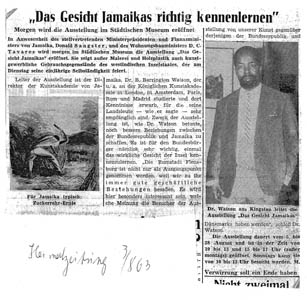
Germany
Due to an extensive campaign, the German media took great notice of Face of Jamaica. The reviews, while mainly concentrated in the regional press at the exhibition’s respective locations, also reached some national newspapers such as Die Welt.
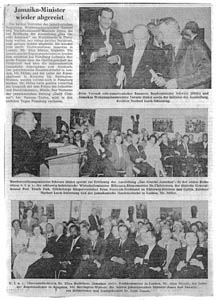
Some of the media responses placed the paintings and sculptures in the context of Western art history. Nevertheless, similarly to the organisers, many journalists rendered Jamaica as a space outside of culture and modernity, or emerging into such. The dominating opinion was that Jamaica’s art was still in the initial stages of its development.
A Flensburger Presse author, for example, bemoaned that ‘no Rembrandts, Rubens and Picassos have been created yet.’ In a patronising fashion, he further observed that ‘talents worthy of note are emerging from Jamaica’s palm groves and sugar cane fields.’ Evoking an image of Jamaica as a tropical and rural paradise, he thus contrasted a selection of canonised European ‘geniuses’ representing Old World standards with, as he implied, a not yet civilised land in which juvenile artists evolved from the island’s soil.
The responses to Face of Jamaica fall within a long trajectory of how non-Western cultures are represented and discussed in exhibition practises.
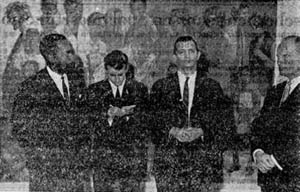
Several high-ranking politicians took part in the opening of Face of Jamaica at the Städtisches Museum in Flensburg: the Jamaican Deputy High Commissioner in the UK, Allan Morais, the Jamaican Minister of Housing, D.C. Tavares, and the Minister of Communications and Works, Kenneth Jones. The exhibition seemed to be a matter of national importance not only for Jamaica, but also for the host country as the presence of some high-ranking German politicians in Flensburg suggests, most notably the Defense Minister Kai-Uwe von Hassel and the Minister for Nutrition Werner Schwarz.
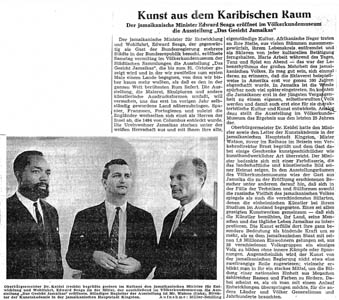
The then Prime Minister Edwards Seaga was unable to travel to Flensburg because of the launch of Jamaican television. He attended, however, the opening at Freiburg’s Ethnographic Museum in October 1963. Standing in front of Barrington Watson’s painting Out of Many One People, Seaga drew attention to Jamaica’s ethnic diversity and underlined that “art also served a political purpose” as it contributed to “unifying the many peoples and races to one nation.” All artists, he continued, were trying to interpret their country, its people and everyday life.
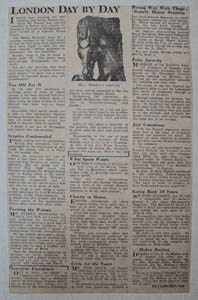
Ellen Redlefsen, the Flensburg museum’s director, was asked to organise the German itinerary. Initially, it was intended to show Face of Jamaica at art museums. Redlefsen, however, had reservations as with the inclusion of craft items, it was ‘only partially an art exhibition.’ Instead, she suggested that the show was better suited for anthropological museums. Traditionally these museums have collected objects from the cultural contexts of non-‘Western’ societies, in particular those that fuelled a curiosity for the foreign in the European viewer.

* Reproduction, including downloading of works is prohibited by copyright laws and international conventions without the express written permission of the artists.